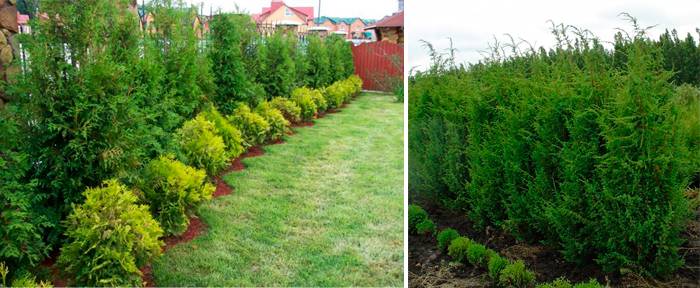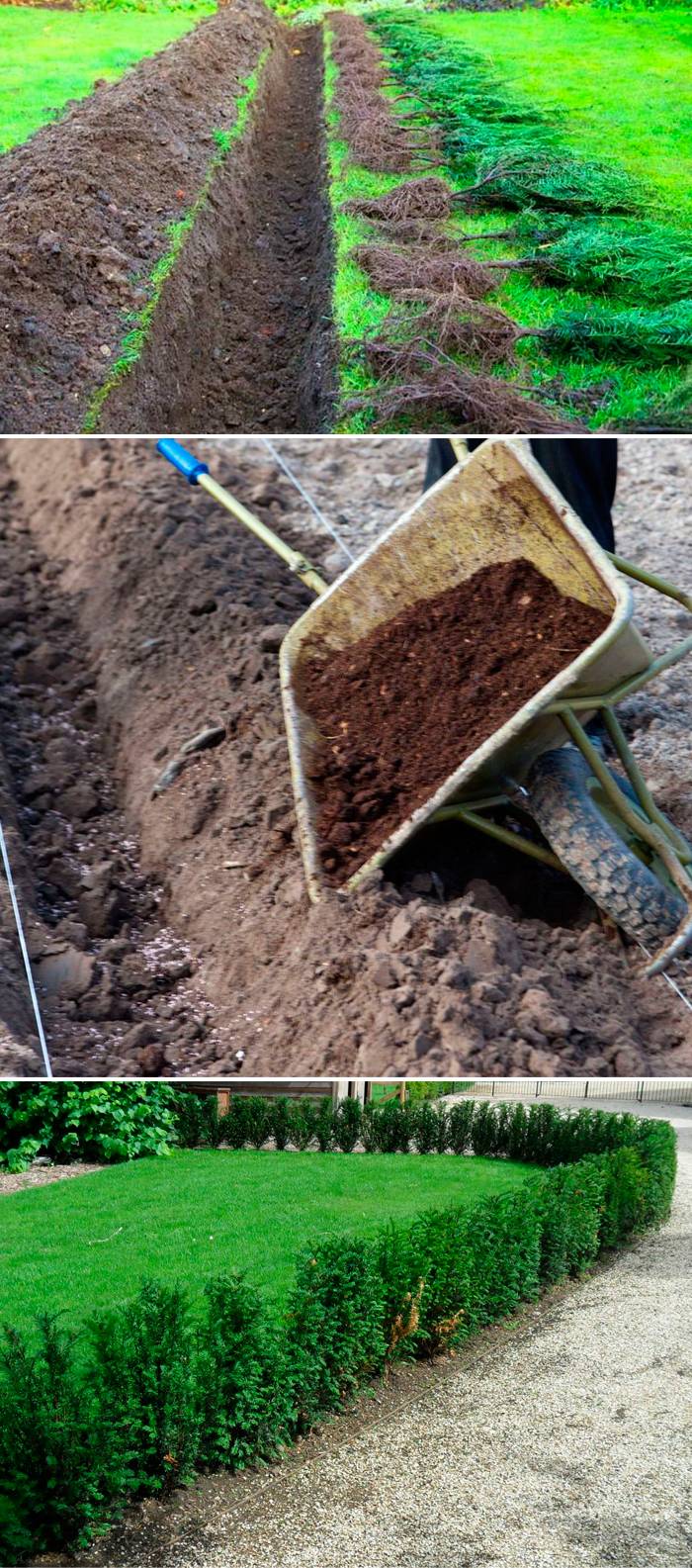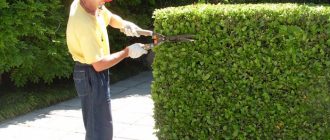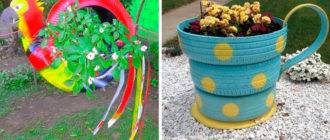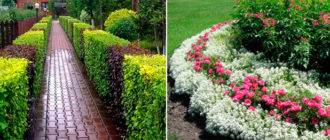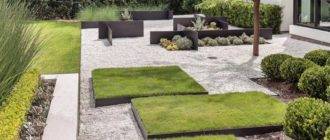Plants from which evergreen hedges are formed, especially conifers, are unpretentious, do not require careful maintenance, and practically do not get sick. But still, you must follow a number of recommendations if you decide to create such a fence on your site.
Basic rules for planting an evergreen hedge
Before planting, it is worth choosing exactly those plants that are most suitable for a particular region. After all, there are those who can survive the cold, and there are heat-loving ones who will die in the very first winter. So, some varieties of juniper perfectly tolerate even cold winters, they include: Chinese, Ordinary, Siberian, Cossack, Horizontal and others. Canadian yew and berry yew also have increased resistance to frost.
But boxwood does not tolerate the cold well, since its foliage in the winter continues to evaporate moisture from the surface, and the plant cannot take it from the frozen soil. But if it is well watered and then covered, it will overwinter. Also, in the presence of heavy snowfalls, it will calmly survive the cold.
Distance may also differ from plant species, hedge purpose and subsequent care. So, if you do not intend to cut it, then you need to plant with a long distance.
But, in general, evergreen crops are planted in a trench about 60 cm deep for large shrubs and trees and 40 cm for small ones. The planting width in the first case is 80 cm-1 m, in the second - 40-60 cm.
When growing a multi-tiered hedge, each subsequent trench is dug through 40-50 cm, planting lower plants in them in a checkerboard pattern. Soil with fertilizers is laid at the bottom.
Rules for the care of an evergreen hedge
Many of the evergreens do not require constant care and maintenance, but nevertheless they need timely watering in especially dry weather. Also, periodic feeding (once a season) with mineral fertilizers containing potassium and phosphorus will not hurt. This stimulates better growth. This is especially true for young plants and first years.
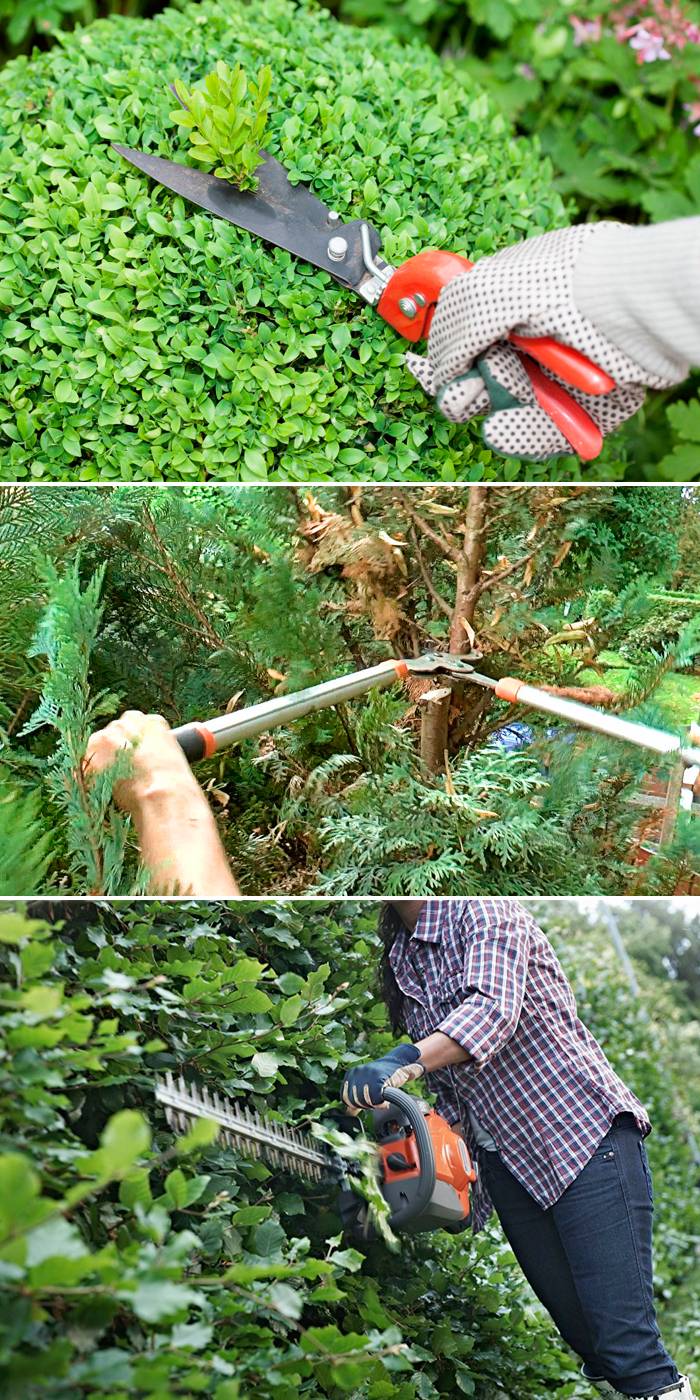
If you decide to give the plants an interesting look, use wire templates for the first time. They are trimmed in the spring, before the start of sap flow, or at the end of summer, when the plant is actively growing.
Ephedra and small-leaved crops are cut with hand or electric garden shears, trees with thick stems and large-leaved shrubs with pruning shears. Chainsaws are also used for trimming.
It is important to inspect the plant at intervals of 3-5 weeks and, if modified branches with yellowness or mold were noticed, be sure to remove and burn them in order to prevent the spread of the disease.

